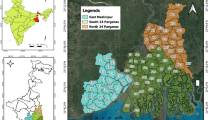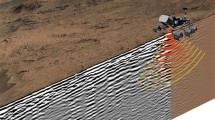Abstract
In support of SNOW-V10, the National Oceanic Administration/National Severe Storms Laboratory (NOAA/NSSL) mobile dual-polarized X-band (NO-XP) radar was deployed to Birch Bay State Park in Birch Bay, Washington from 3 January 2010 to 17 March 2010. In addition to being made available in real time for Science and NOWcasting of the Olympic Weather for Vancouver 2010 (SNOW-V10) operations, NO-XP data are used here to demonstrate the capabilities of easily deployable, polarimetric X-band radar systems, especially for regions where mountainous terrain results in partial beam blockage. A rainfall estimator based on specific attenuation is shown to mitigate the effects of partial beam blockage and provide potential improvement in rainfall estimation. The ability of polarimetric X-band radar to accurately detect melting layer (ML) height is also shown. A 16 h comparison of radar reflectivity (Z), differential reflectivity (Z DR), and correlation coefficient (ρhv) measurements from NO-XP with vertically pointing Micro Rain Radar observations indicates that the two instruments provide ML height evolution that exhibit consistent temporal trends. Since even slight changes in the ML height in regions of mountainous terrain might result in a change in precipitation type measured at the surface, this shows that horizontally extensive information on ML height fluctuations, such as provided by the NO-XP, is useful in determining short term changes in expected precipitation type. Finally, range-height indicator (RHI) scans of NO-XP Z, Z DR, and ρhv fields from SNOW-V10 are used to demonstrate the ability of polarimetric radar to diagnose microphysical processes (both above and below the ML) that otherwise remain unseen by conventional radar. Near-surface enhancements in Z DR are attributed to either differential sedimentation or the preferential evaporation of smaller drops. Immediately above the ML, regions of high Z, low Z DR, and high ρhv are believed to be associated with convective turrets containing heavily aggregated or rimed snow that supply water/ice mass that later result in enhanced regions of precipitation near the surface. Higher up, horizontally extensive regions of enhanced Z DR are attributed to rapid dendritic growth and the onset of snow aggregation, a feature that has been widely observed with both S band and C band radars.










Similar content being viewed by others
References
Andric, J., D. Zrnic, and V. Melnikov, 2009: Two-layer patterns of enhanced ZDR in clouds. Preprint, 34 th Int. Conf. on Radar Meteorology. Williamsburg, VA, Amer. Meteor. Soc., P2.12. [Available online at http://ams.confex.com/ams/pdfpapers/155481.pdf].
Bechini, R., L. Baldini, R. Cremonini, and E. Gorgucci, 2008: Differential Reflectivity Calibration for Operational Radars. J. Atmos. Oceanic Technol., 25, 1542-1555.
Friedrich, F., U. Germann, J. J. Gourley, and P. Tabary, 2007: Effects of Radar Beam Shielding on Rainfall Estimation for the Polarimetric C-Band Radar. J. Atmospheric Oceanic Technol., 24, 1839–1859.
Giangrande, S.E., J.M. Krause, and A.V. Ryzhkov, 2008: Automatic designation of the melting layer with a polarimetric prototype of the WSR-88D radar. J. Appl. Meteor. Clim., 47, 1354–1364.
Gultepe, I., G. A. Isaac, P. Joe, P. Kucera, J. Theriault, T. Fisico, and K. Rasmussen, 2012: Roundhouse (RND) mountain top research site: measurements and uncertainties for winter alpine weather conditions. J. Pure Appl. Geophy., this issue.
Isaac, G. A., P. I. Joe, J. Mailhot, M. Bailey, S. Bélair, F. S. Boudala, M. Brugman, E. Campos, R. L. Carpenter, R. W. Crawford, S. G. Cober, B. Denis, C. Doyle, H. D. Reeves, I. Gultepe, T. Haiden, I. Heckman, L. X. Huang, J. A. Milbrandt, R. Mo, R. M. Rasmussen, T. Smith, R. E. Stewart, D. Wang and L. J. Wilson, 2012: Science of nowcasting Olympic weather for Vancouver 2010 (SNOW-10): A World Weather Research Programme project. J. Pure Appl. Geophy., this issue.
Kennedy, P.C., and S.A. Rutledge, 2011: S-band dual-polarization radar observations of winter storms. J. Appl. Meteor. Clim., 50, 844–858.
Kumjian, M., and A. Ryzhkov, 2010: The impact of evaporation on polarimetric characteristics of rain. Theoretical model and practical implications. J. Appl. Meteor. Clim., 49, 1247–1267.
Kumjian, M. and A. Ryzhkov, 2011: The impact of size sorting on the polarimetric radar variables. J. Atmos. Sci., in press.
Lakshmanan, V., T. Smith, G. J. Stumpf, and K. Hondl, 2007: The Warning Decision Support System—Integrated Information, Wea. Forecasting, 22, 596–612.
Löffler-Mang, M., M. Kunz, and W. Schmid, 1999: On the performance of a low-cost K-band Doppler radar for quantitative rain measurements. J. Atmos. Oceanic Technol., 16, 379–387.
Maesaka, T., M. Maki, K. Iwanami, S. Tsuchiya, K. Kieda, and A. Hoshi, 2011: Operational rainfall estimation by X-band MP radar network in MLIT, Japan. Preprints, 35 th Int. Conf. on Radar Meteorology, Pittsburgh, PA, Amer. Meteor. Soc., P11.142. [Available online at http://ams.confex.com/ams/pdfpapers/191685.pdf].
Martner, B., S. Yuter, A. White, S. Matrosov, D. Kingsmill, and F. Ralph, 2008: Raindrop size distributions and rain characteristics in California coastal rainfall for periods with and without a radar bright band. J. Hydrometeorol., 9, 408–425.
Matrosov, S., 2010: Evaluating polarimetric X-band radar rainfall estimators during HMT. J. Atmos. Oceanic Technol., 27, 122–134.
Matrosov, S., K. Clark, and D. Kingsmill, 2007: A polarimetric radar approach to identify rain, melting layer, and snow regions for applying corrections to vertical profiles of reflectivity. J. Appl. Meteor., 46, 154–166.
McLaughlin, D., D. Pepyne, B. Philips, J. Kurose, M. Zink, D. Westbrook, E. Lyons, E. Knapp, A. Hopf, A. Defonzo, R. Contreras, T. Djaferis, E. Insanic, S. Frasier, V. Chandrasekar, F. Junyent, N. Bharadwaj, Y. Wang, Y. Liu, B. Dolan, K. Droegemeier, J. Brotzge, M. Xue, K. Kloesel, K. Brewster, F. Carr, S. Cruz-Pol, K. Hondl, and P. Kollias, 2009: Short-Wavelength Technology and the Potential For Distributed Networks of Small Radar Systems. Bull. Amer. Meteor. Soc., 90, 1797–1817.
Moisseev, D., E. Saltikoff, and M. Leskinen, 2009: Dual-polarization weather radar observations of snow growth processes. Preprints, 34 th Int. Conf. on Radar Meteorology. Williamsburg, VA, Amer. Meteor. Soc., 13B.2. [Available online at http://ams.confex.com/ams/pdfpapers/156123.pdf].
Russchenberg, H., and L. Ligthart, 1996: Backscattering by and propagation through the melting layer of precipitation: A new polarimetric model. IEEE Trans. Geosci. Remote Sens., 34, 3–14.
Ryzhkov, A.V., S.E. Giangrande, V. M. Melnikov, and T.J. Schuur, 2005: Calibration issues of dual-polarization radar measurements. J. Atmos. Oceanic Technol., 22, 1138–1155.
Ryzhkov, A., S. Giangrande, A. Khain, M. Pinsky, and A. Pokrovsky, 2008: Exploring model-based polarimetric retrieval of vertical profiles of precipitation. Extended Abstracts, 5 th European. Conf. Radar Meteor. Hydrol., Helsinki, Finland, CD-ROM, P6.1.
Ryzhkov, A., H. Reeves, T. Schuur, M. Kumjian, and D. Zrnic, 2011a: Investigations of polarimetric signatures in winter storms and their relation to aircraft icing and freezing rain. Preprints, 35 th Int. Conf. on Radar Meteorology, Pittsburgh, PA, Amer. Meteor. Soc., 197. [Available online at http://ams.confex.com/ams/pdfpapers/191245.pdf].
Ryzhkov, A., P. Zhang, and J. Krause, 2011b: Simultaneous measurements of heavy rain using S-band and C-band polarimetric radars. Preprints, 35 th Int. Conf. Radar Meteorology, Pittsburgh, PA, Amer. Meteor. Soc., 17.1. [Available online at http://ams.confex.com/ams/pdfpapers/191242.pdf].
Stewart, R. E., J. D. Marwitz, J. C. Pace, and R. E. Carbone, 1984: Characteristics through the Melting Layer of Stratiform Clouds. J. Atmos. Sci., 41, 3227–3237.
Tabary, P., A. Le Henaaf, G. Vulpiani, J. Parent-du-Chatelet, and J. Gourley, 2006: Melting layer characterization and identification with C-band dual-polarization radar: a long-term analysis. Proc. 4 th European Conf. Radar Meteor. Hydrol., Barcelona, Spain, 17–20.
Testud, J., E. Le Bouar, E. Obligis, and M. Ali-Mehenni, 2000: The rain profiling algorithm applied to polarimetric weather radar. J. Atmos. Oceanic Technol., 17, 332–456.
Acknowledgments
Thanks to Ric Adams, Valery Melinkov, Dave Priegnitz, Bob Staples, Dave Warde and Dusan Zrnic who volunteered to staff NO-XP for 2 week shifts during the SNOW-V10 campaign. Thanks to Dusan Zrnic who helped to initiate this project and provided valuable advice and help in siting the radar. A special thanks to Bob Staples, who stepped in at the last minute and helped drive the NO-XP to Birch Bay and back to Norman, OK. Allen Zahrai, John Carter, Chris Curtis, Mike Schmidt, and Richard Wahkinney of NSSL provided expert technical assistance in maintaining the radar while John Krause of CIMMS provided assistance in reading and processing the data. Thanks to Kurt Hondl for developing the real-time Web displays and helping solve software issues with the system. Thanks to Dan Suppes for building and maintaining the NO-XP radar data archive. Gratitude is also expressed to Public Safety Director Mike Haslip and City Manager Gary Tomsic and the City of Blaine, WA who provided assistance with the deployment, ranging from advice on the availability of local services to temporary garage space when NO-XP needed repairs. Thanks also to the Washington State Parks and Recreation Commission and Park Ranger Ted Morris for allowing us to operate from the confines of Birch Bay State Bark. Thanks to Carl Lind and Lind Oil for refueling us every 10 days during the project. The successful deployment of NO-XP to SNOW-V10 would not have been possible without their assistance. The comments of two anonymous reviewers whose comments helped improve the manuscript. Funding for CIMMS authors was provided by NOAA/Office of Oceanic and Atmospheric Research under NOAA-University of Oklahoma Cooperative Agreement #NA17RJ1227, U.S. Department of Commerce.
Author information
Authors and Affiliations
Corresponding author
Rights and permissions
About this article
Cite this article
Schuur, T.J., Ryzhkov, A.V., Forsyth, D.E. et al. Precipitation Observations with NSSL’s X-band Polarimetric Radar during the SNOW-V10 Campaign. Pure Appl. Geophys. 171, 95–112 (2014). https://doi.org/10.1007/s00024-012-0569-2
Received:
Revised:
Accepted:
Published:
Issue Date:
DOI: https://doi.org/10.1007/s00024-012-0569-2




